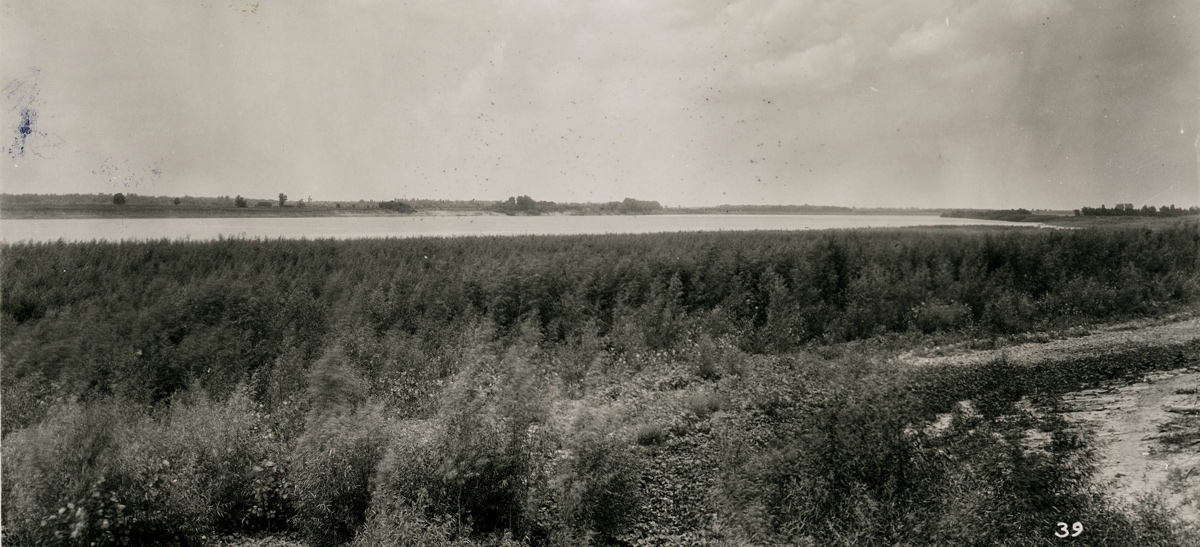Owensboro, KY[1]No known record exists of expedition’s travel between Louisville and Fort Massac. Using information from travelers of the period and Cramer’s 1802 river guide, The Navigator, one … Continue reading On or near this date, the expedition passes Yellow Banks, so named for the tint of the Ohio River bank. Today the settlement is called Owensboro. In this area, they pass giant cane and numerous water fowl in ponds along the river.
Giant Cane near Uniontown, Kentucky
1920 (Detail)
Kentucky Geological Survey Photographs, Courtesy Kentucky Historical Society, https://www.kyhistory.com/cdm/compoundobject/collection/PH/id/7714/rec/135.
Giant Cane
“The cane now grows plenty on both shores.”
—Thomas Rodney[2]25 October 1803. Dwight L. Smith and Ray Swick, ed., A Journey Through the West: Thomas Rodney’s 1803 Journal from Delaware to the Mississippi Territory (Athens: Ohio University Press, 1997), … Continue reading
Noisy Waterfowl
[A]bove and below the Yellow Banks there are vast ponds or little lakes a small distance from the river on both side where wild fowl assemble in vast numbers. We heard several guns fire at them and heard such a tumultious noise of the geese and cranes there, as indicated thousands and tens of thousands.
—Thomas Rodney[3]Ibid., 138.
Notes
| ↑1 | No known record exists of expedition’s travel between Louisville and Fort Massac. Using information from travelers of the period and Cramer’s 1802 river guide, The Navigator, one conjecture is that the captains were at Owensboro near this date. |
|---|---|
| ↑2 | 25 October 1803. Dwight L. Smith and Ray Swick, ed., A Journey Through the West: Thomas Rodney’s 1803 Journal from Delaware to the Mississippi Territory (Athens: Ohio University Press, 1997), 135. |
| ↑3 | Ibid., 138. |

